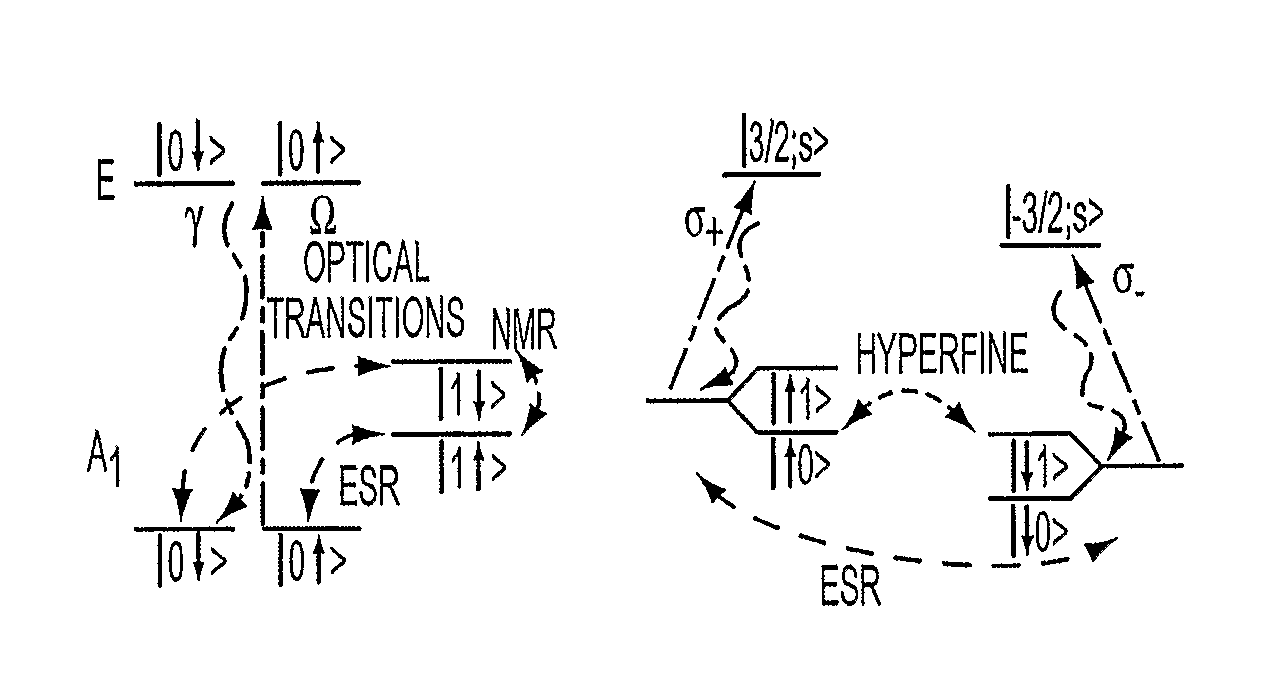Method and apparatus for fault-tolerant quantum communication based on solid-state photon emitters
a photon emitter and solid-state technology, applied in the field of long-distance quantum communication, can solve the problems of limiting the range of direct quantum communication techniques, extending them to long-distance remains a conceptual and technological challenge, and the scale of direct communication is exponential, and achieves the effect of potent opto-electronic integrability and fast operation
- Summary
- Abstract
- Description
- Claims
- Application Information
AI Technical Summary
Benefits of technology
Problems solved by technology
Method used
Image
Examples
Embodiment Construction
[0021]The initial step in a preferred embodiment of the present invention is entanglement generation between two emitters separated by a distance L0. In principle, entanglement can be generated probabilistically by a variety of means, e.g., Raman scattering (see C. Cabrillo, J. I. Cirac, P. Garcia-Fernandez, and P. Zoller, Phys. Rev. A 59, 1025 (1999)) or polarization-dependent fluorescence (see B. B. Blinov et al., Nature 428, 153 (2004). However, solid-state emitters often do not exhibit appropriate selection rules, and for our repeater protocol it is essential that the optical transition be independent of the nuclear spin state. We thus present an entanglement mechanism based on state-selective elastic light scattering (see FIGS. 1(a)-(c)) which meets these requirements.
[0022]As an example, consider the situation in which each emitter is placed inside a photonic cavity, whose output is coupled to a photonic fiber. The cavity is not essential for the present invention, but it enha...
PUM
 Login to View More
Login to View More Abstract
Description
Claims
Application Information
 Login to View More
Login to View More - R&D
- Intellectual Property
- Life Sciences
- Materials
- Tech Scout
- Unparalleled Data Quality
- Higher Quality Content
- 60% Fewer Hallucinations
Browse by: Latest US Patents, China's latest patents, Technical Efficacy Thesaurus, Application Domain, Technology Topic, Popular Technical Reports.
© 2025 PatSnap. All rights reserved.Legal|Privacy policy|Modern Slavery Act Transparency Statement|Sitemap|About US| Contact US: help@patsnap.com



